Let the people feel ashamed! American man collects 100,000 antiques in China and opens a museum
"Thirty miles from Wujiang, the place is called Lihua Village. I am like a fisherman, coming to ask Taoyuan Tianjin."
During the National Day, I stayed in Lili Ancient Town in Suzhou for a few days with several friends. If you don't want to visit those noisy ancient towns, Lili Ancient Town is a good choice.
It is the early autumn of Jiangnan when osmanthus fragrance is fragrant. "I haven't seen pear blossoms and snow, but I smell the fragrance of golden osmanthus." When I met the osmanthus blossoms one tree after another, the air was full of fragrance.


Lili, a very poetic place name, is located in the southeast of Wujiang District, Suzhou City. This is an ancient town with outstanding people, with a long history, rich culture, and famous people.
This is also the most fireworks ancient town I have ever seen.
Most of the people who live and shop are locals. Local people often wash clothes and vegetables by the river, and occasionally small boats sail by it. Residents sat leisurely in front of the door and chatted in a daze, as if they had entered childhood memories.


The five-day and four-night vacation trip to Lili Ancient Town in Suzhou took almost all the corners of the ancient town and ate all the special delicacies of the ancient town. But the most memorable thing is a museum.
Because it is too shocking and amazing, I must write it down and share it with you. This museum, called "Liuyue", is just near the ancient town of Lili and is a 10-minute walk.
Next to it, there is also a newly opened "Liuyuezhuang Museum Hotel". I stayed there for a few nights and it is quite personalized. It must be the next online celebrity check-in hotel, and I will slowly share it with you later.

Liuyue Museum is a four-story exhibition hall built by using the factory structure of the former site of the daily chemical factory, re-planning and design.
The exterior wall is re-decorated with old bricks and old tiles, which is environmentally friendly and quaint. The bright color blocks on the facade continue the overall style.
The 18,000-square-square exhibition hall has more than 30 classified exhibition halls, displaying more than 40,000 pieces of collections carefully collected by founder Du Weiming over nearly 40 years in a comprehensive sensory experience method.

I have to talk to you, founder Mr. Du Weiming. At first glance, it sounds like a Chinese name, but it is an authentic American, whose real name is Mitchell Dudek.
Master of Business Administration, Doctor of Laws, studied at well-known universities such as Peking University, Fudan University, National Taiwan University, and Tsinghua University. He is also a founding partner of many international law firms in Shanghai.
This museum's 40,000 collection is just the tip of the iceberg of his collection. He has collected more than 100,000 folk antiques in total, and more than 60,000 are still quietly placed in his warehouse.

In nearly 40 years of collecting experience, he has traveled all over China. Because he was obsessed with traditional Chinese culture and loved collecting Chinese classical furniture and home art, he unknowingly collected more than 100,000 pieces.
During the 40 years he collected, China has undergone earth-shaking changes. People have lived a prosperous life, but many old memories have also been lost.
In each village, old houses and ancestral halls were demolished and new villages were built. It is said that Mr. Du Weiming sometimes bought all the old objects in the entire village.
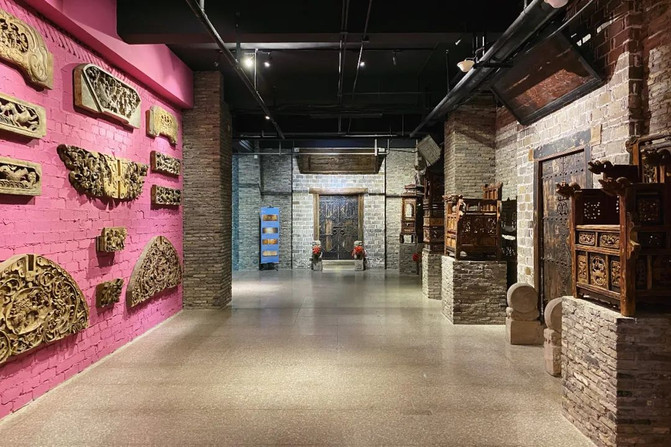
There is a huge hall on the first floor of the museum and a shocking Buddha wall, changing colors. On the back of the Buddha wall is a rose-red wall, which displays various exquisite wood carvings.

The special exhibition on the second floor is still under decoration.
By the way, special reminder, if you come here, you need to stay half a day because it is really too big. The museum's legs go soft. This is still a folk collection museum.
The elevator goes up to the third floor, first is the Shenjiao Hall.
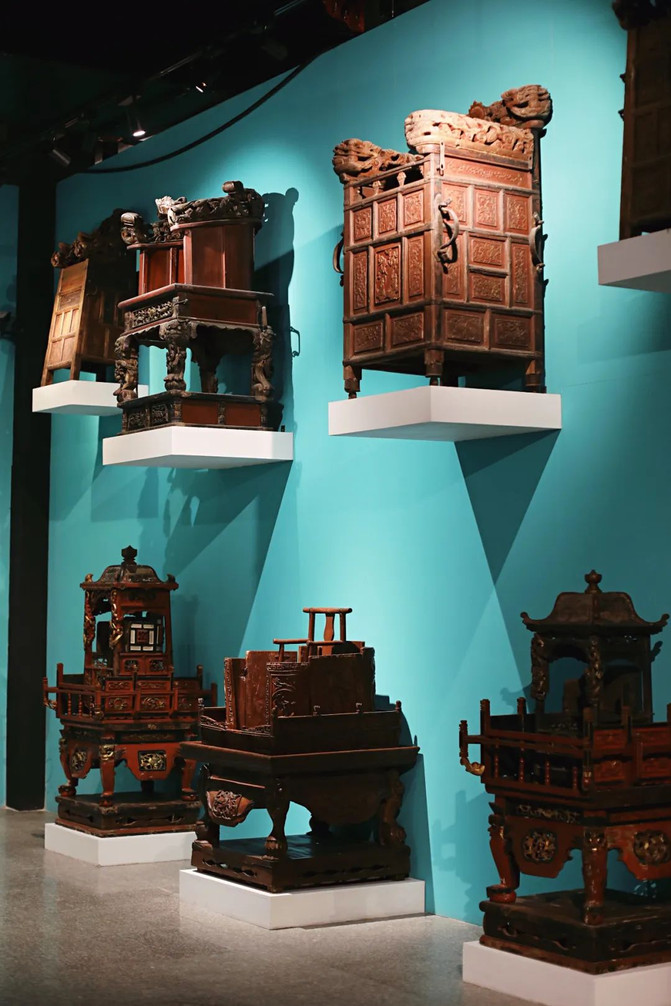
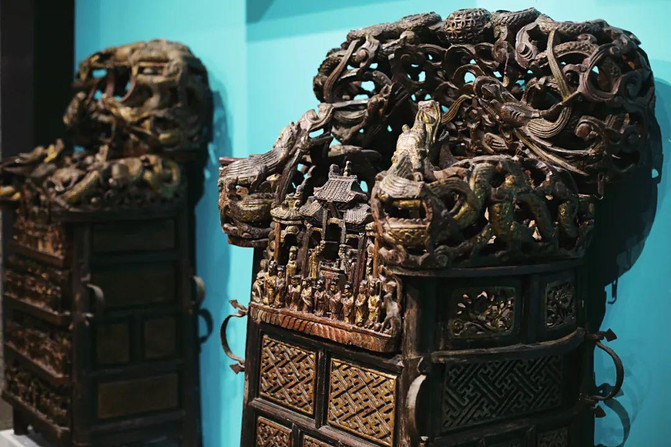
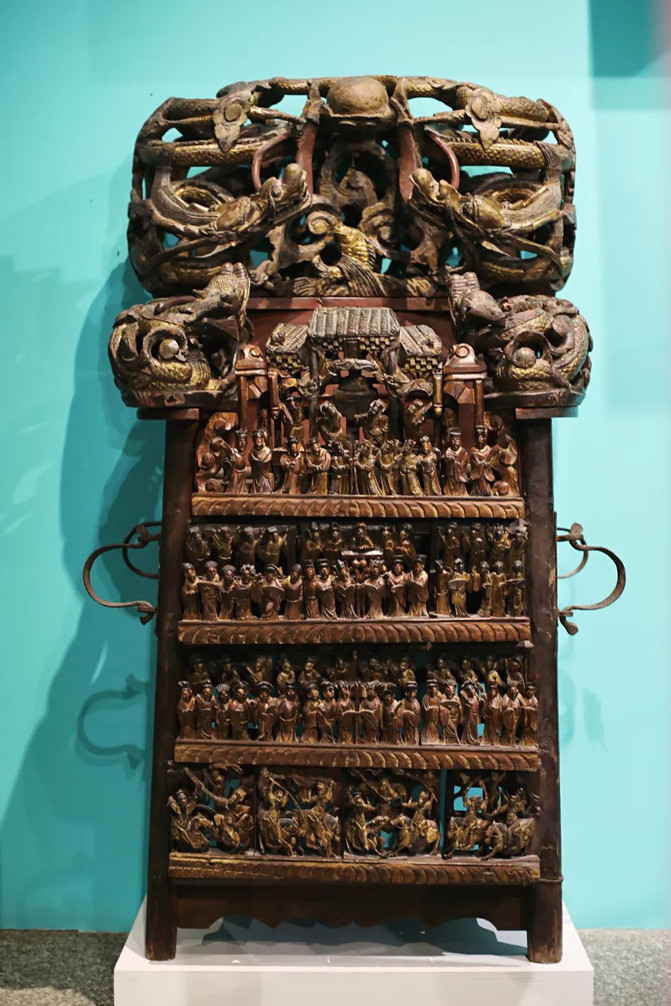
Further down is the sedan chair hall. Be sure to listen to the explanations and gain a lot of knowledge. You will, like me, be moved by the profoundness of Chinese culture.

Liuyue Museum introduces to the general public the forgotten subtleties of traditional Chinese folk art. How could the original owner be willing to sell these exquisite objects to an American?
Decades ago, when transportation was underdeveloped, how were they transported from remote mountain villages to big cities? Questions arose one after another in my heart.



The strong colors make these dull furniture no longer seem so heavy. It is worth mentioning that almost all the exhibits here can be touched with your own hands.
You can feel its texture and feel the aroma it leaves behind. The commentator said that I believe everyone will be careful. This belongs to Chinese culture. If you cover it with a cover, it will widen the distance.
These objects have all been used before and belong to a certain family, which may evoke some people's memories.

Bed and Noodle Hall, Lacquer Painting Box Hall, Screen Hall, Plaque Hall, Dowry Gift Box Hall... Every museum is very shocking. The entire museum displays the same type of objects together.
It is said that these objects have been disassembled and placed in warehouses for decades. It took a lot of time to assemble it.
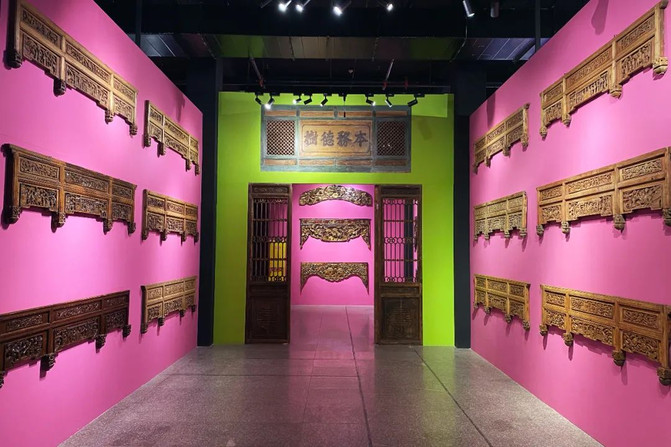

Why is it called Liuyue? I asked the commentator.
"Not only can the eyes, ears, nose, tongue, and skin feel the artistic atmosphere here wholeheartedly, but they can also mobilize people's sixth sense to make the body and mind happy. Therefore, the museum is named Liuyue," he replied.

The original intention of building this museum is to hope that these items of important historical significance and artistic value that will soon be forgotten can continue to be loved and appreciated by people.
When he first collected Mr. Du Weiming's actions, he did not expect that one day they would be displayed here.
These items made countless Chinese sigh: Why was the person doing this by an American?

In the statue hall, various statues are quietly placed. Most of them are no longer known where in China they were collected.
Because there are too many collections and the time is long, there is no way to verify it.

I actually found that a Pig Pig was also worshipped as a god.

Mr. Du Weiming is a successful lawyer in his career, but a lawyer actually has such wealth and collects more than 100,000 pieces of collectibles?
Although many rural people do not know the value of these items and sometimes sell them cheaply, there are so many. All the collections currently on display at Liuyue Museum are Mr. Du Weiming's personal collections. He really collects everything!
There are also drums, stone statues, stone carvings, shrines... As long as he thinks it is unique, he buys it and hides it.

Quedi Hall is also an exhibition hall with a deep memory.
Queti is originally an object placed at the upper end of a column to bear the upper pressure together with the column. Its specific location is at the junction of the beam and the column or the square and the column, and it has a certain load-bearing effect.
The dark purple walls display various shapes. Over the years, how many ancient buildings have been demolished!


This is a panjia museum. It shows the basin rack used to wash your face in rural areas. There are so many styles, and each one is so exquisite!


Further up, on the fourth floor, you will find the Gate God Hall at the entrance. Because I live in the Liuyuezhuang Museum Hotel, there are door gods in the corridor, who look very friendly.

The door gods of all walks of life are like a painting embedded in the wall, with different looks and strong colors.

On the fourth floor, there are medicine cabinets, medicine shops, bookcases, cabinets, and tables... The most memorable one is the ancient bed museum. Those beds were too big and beautiful, but why did those people sell them in the first place?

Back on the first floor, there is a space that looks like a regular museum. Inside the glass cover, there were stone statues.

In addition to the Liuyue Museum, there is also a museum themed Yue Coffee Bar (cafe), where you can sit down and have a cup of coffee when you are tired.
There is also Yueniandian Shop (Cultural and Creative Store), where you can buy a souvenir and take it home. The display is also very distinctive.

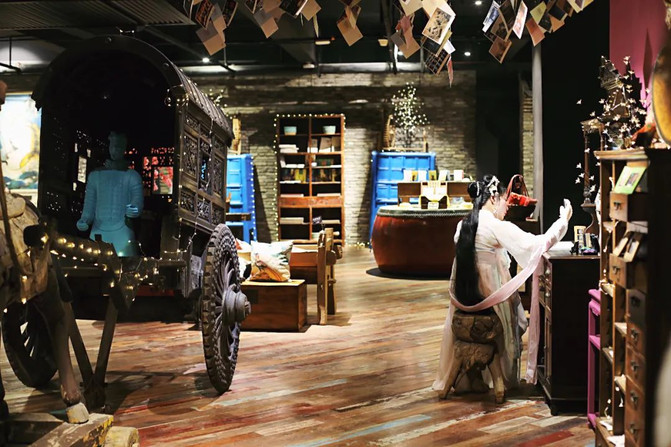

The museum will also continuously plan various creative cultural and entertainment activities, allowing tourists who come here to experience the endless fun of Chinese folk art.
Walking down three floors, I feel like my legs are useless.
Walking out of the Liuyue Museum, I lamented that an old beauty had opened this museum in the ancient town of Jiangnan. It was full of ancient Chinese folk antiques, which really made the Chinese people feel ashamed and ashamed.
Tips:
Opening hours: 10:00-16:00 all year round
Ticket price: 100 yuan
There are sufficient parking spaces in the surrounding area, making it very convenient to travel by car
Previous Article:Wangshan meets the Louvre Museum, the Embroidery Art Museum, Jiangnan Study Room... Suzhou can still play like this
Next Article:Here is the most comprehensive travel guide for Suzhou! Take this guide and go on a trip
